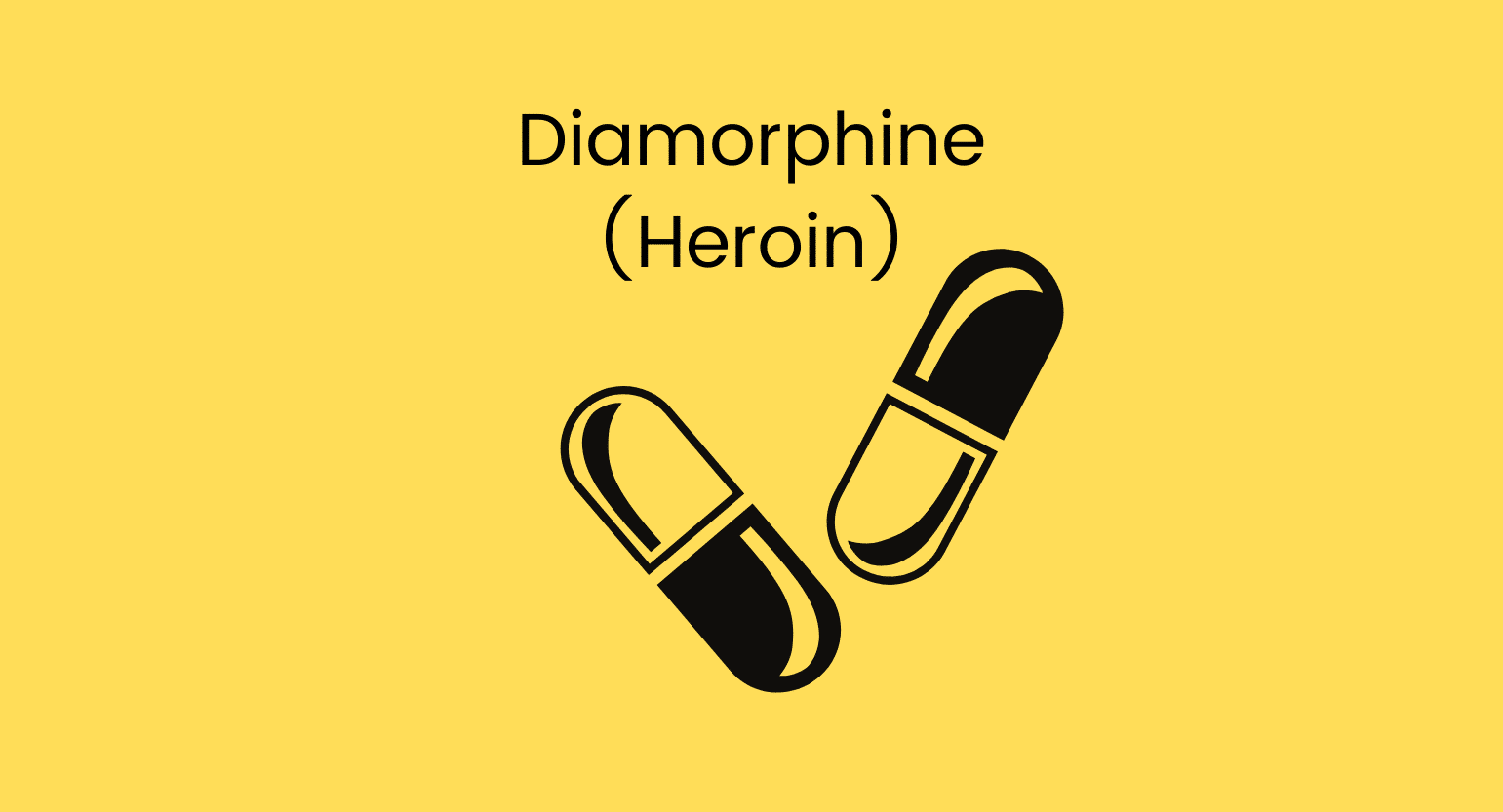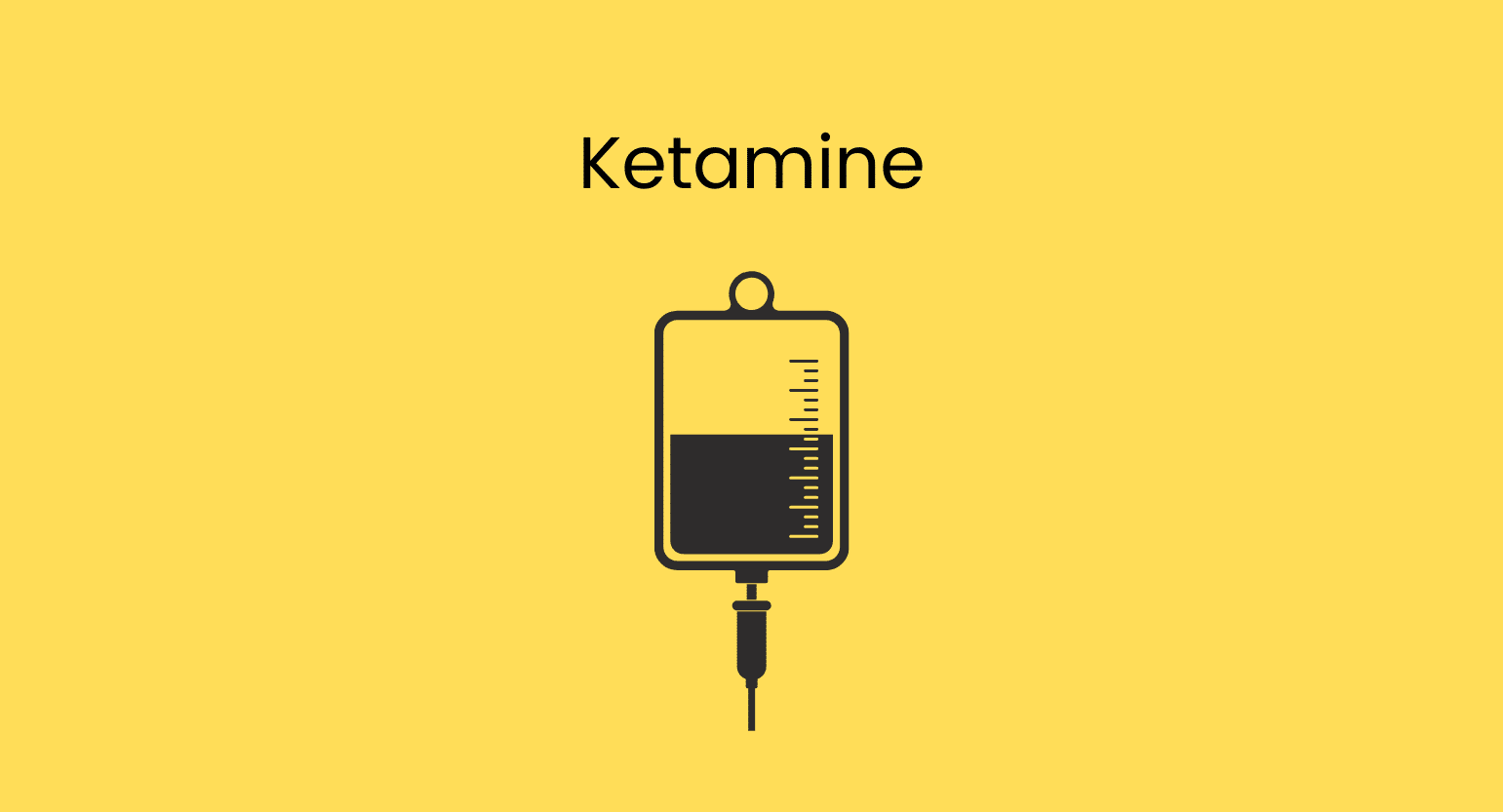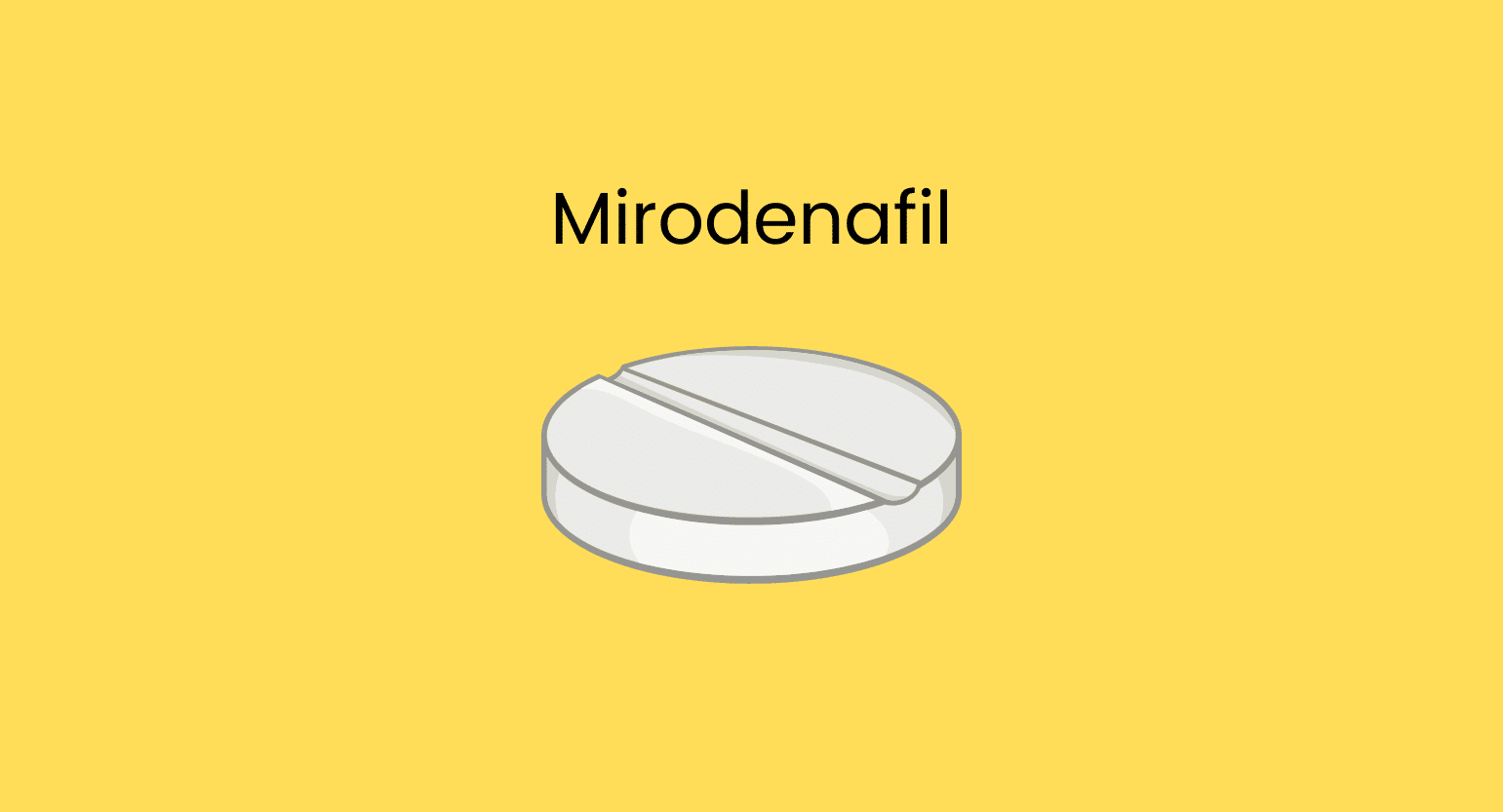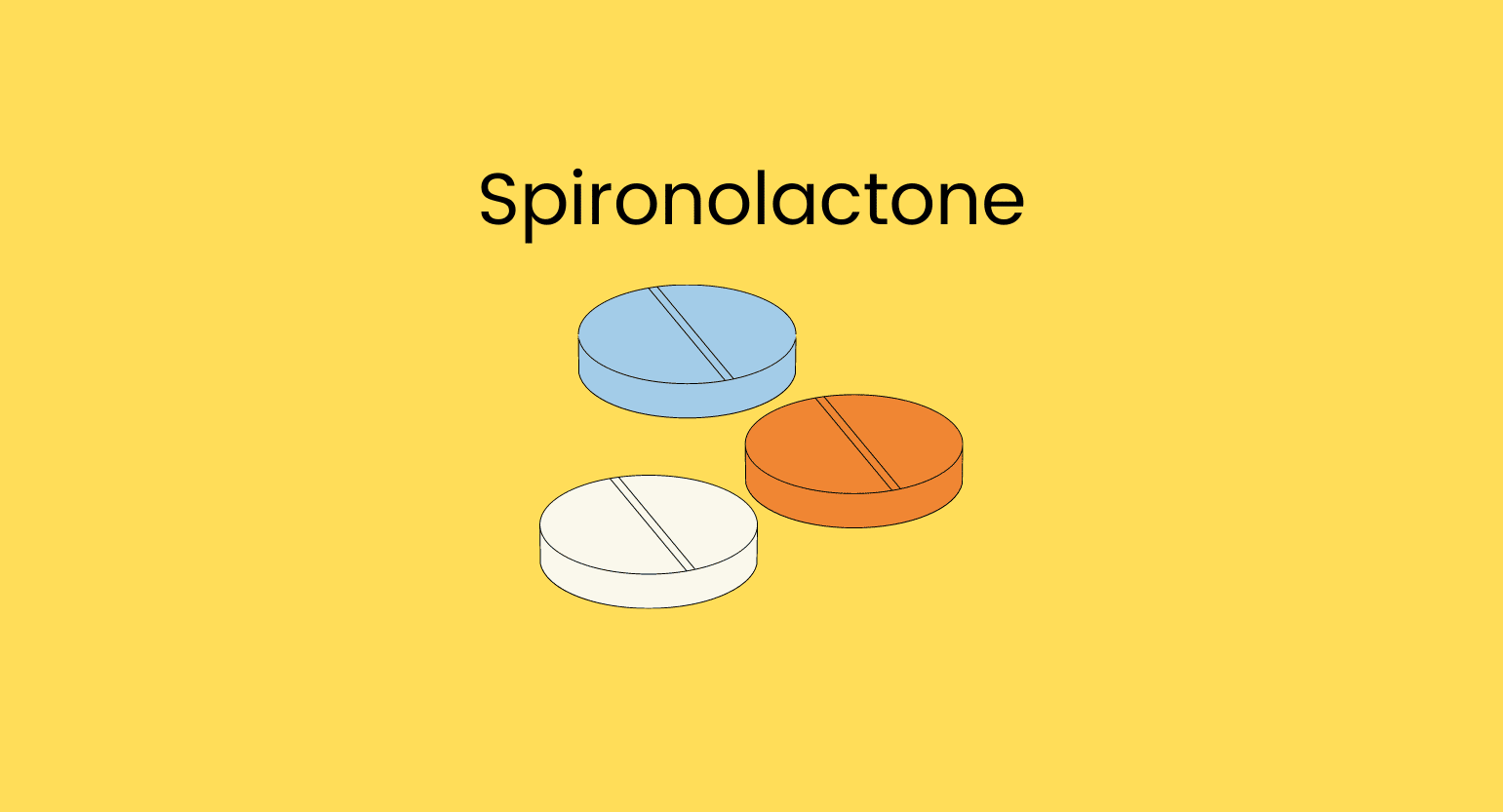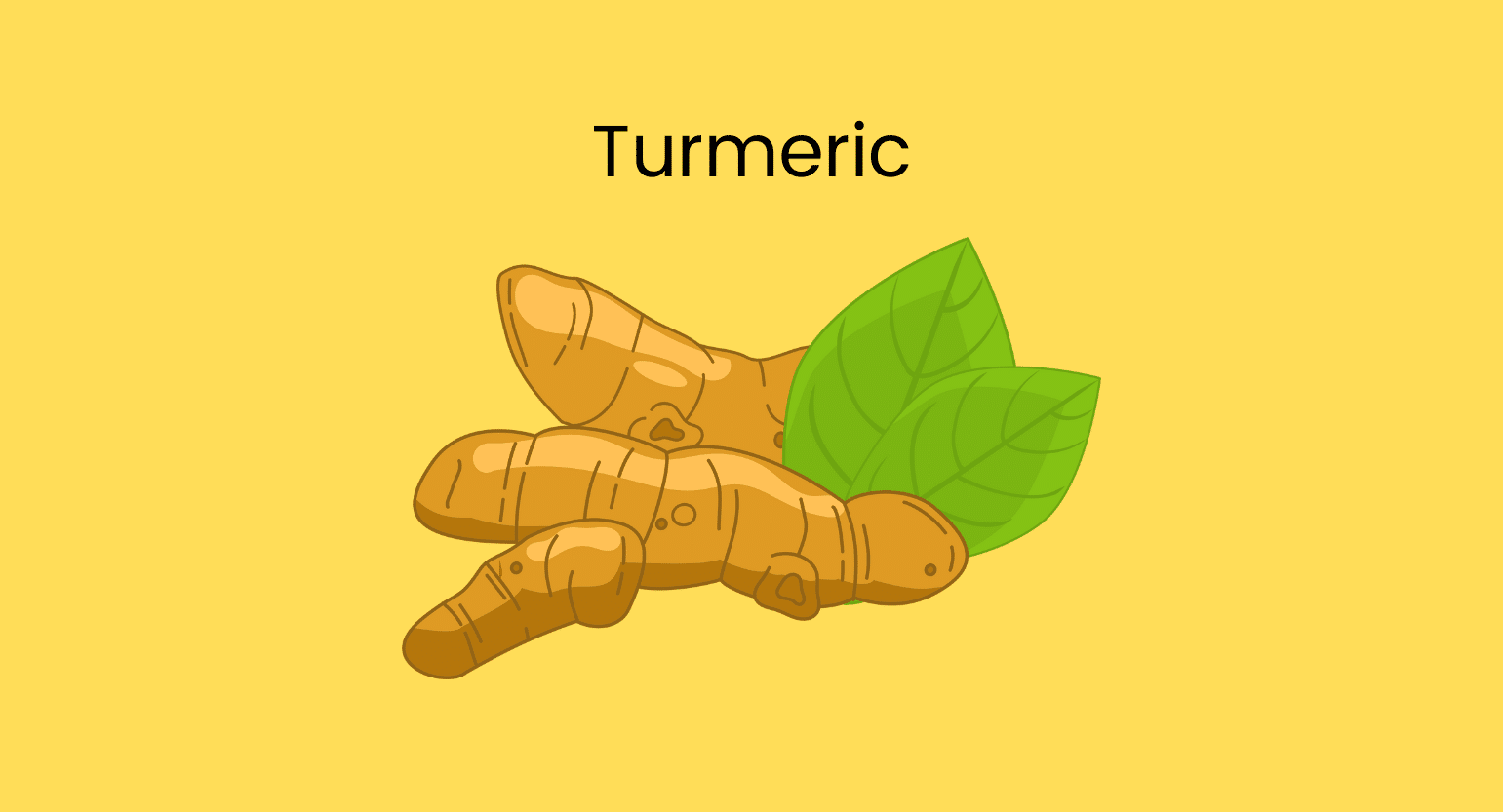Does Kratom Interact With Diamorphine?
Yes, kratom will increase the chance of overdose from heroin if the two are used together. Combining kratom and heroin is not considered safe unless it’s under the direct guidance of a doctor.
The same applies when combining kratom with any opioid medications.
Both substances are opioid receptor agonists; in fact, kratom’s opioid-like abilities are the main reason the FDA is concerned about it.
By itself, kratom is not considered dangerous. The vast majority of overdose cases involving kratom were also associated with other drugs — one of the most common being heroin [1].
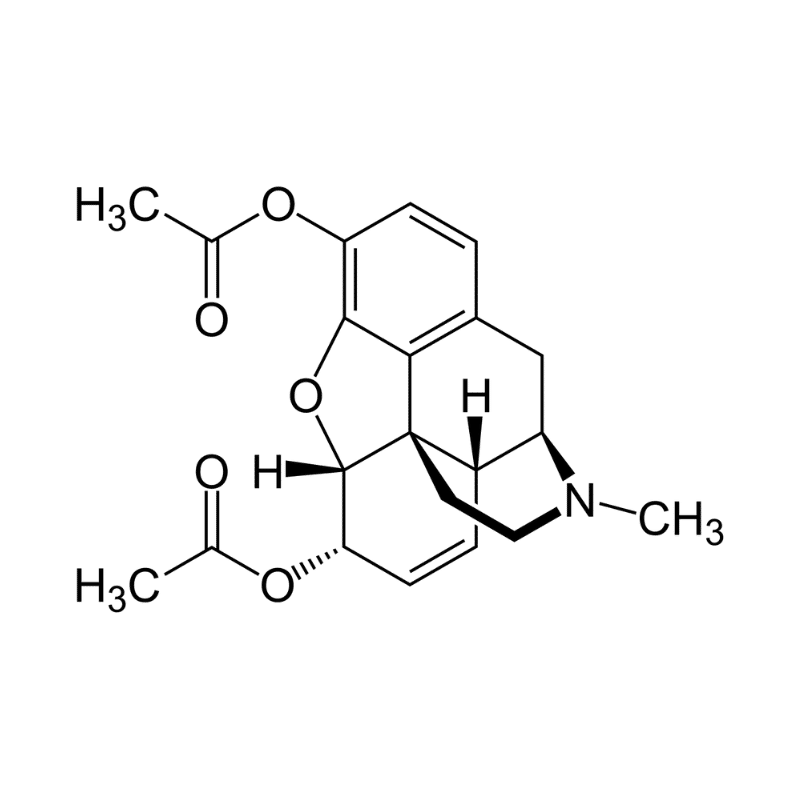
Heroin Specs
| Drug Name | Diamorphine |
| Trade Name | N/A |
| Other Names | The street name of diamorphine is “heroin.” Diacetylmorphine, Acetomorphine, Acetylated morphine, Morphine diacetate |
| Classification | Opioid |
| CYP Metabolism | None |
| Interaction With Kratom | Agonistic |
| Risk of Interaction | Moderate to High |
Is It Safe to Take Kratom With Diamorphine?
Simply stated: No! This is a combination you should avoid unless under guidance from a doctor.
Some people will mix kratom and heroin under doctors’ orders as a substitution therapy to wean off the more dangerous and addictive heroin.
Doses of heroin are gradually reduced while kratom is gradually increased. The goal is to wean off heroin entirely and then wean off kratom afterward. This is the same process used to wean patients off heroin using methadone. The difference is that kratom is easier to quit later and is much less addictive and harmful to the body than methadone.
Related: How to Taper Off Kratom.
What Is Heroin (Diamorphine)?
Diamorphine is a narcotic opioid used for the treatment of severe pain.
Essentially, diamorphine is medical-grade heroin.
They’re the same chemical compound, except street heroin is a crude variation of the lab-made diamorphine.
This is significant as street-bought heroin is regularly cut with dangerous contaminants like fentanyl (which is many times more potent) and contains numerous impurities.
Diamorphine (heroin) is illegal in the United States.
What is Diamorphine Used for?
As an opioid, diamorphine’s medical uses come from its analgesic (painkilling) effects.
It’s usually considered a rare treatment, administered when a person is dealing with immense pain from cancer, childbirth, severe physical trauma, etc. It’s also used in palliative care, helping people cope with symptoms of end-stage terminal illnesses.
Diamorphine is strictly prescription-only and available for use within a hospital setting.
Some countries use diamorphine as an essential part of opioid replacement therapy. This specific treatment, called heroin-assisted therapy (HAT), is somewhat controversial but is effective when other, weaker opioids like morphine fail [2].
However, we must note that the United States does not recognize heroin as having medical uses. As such, it is a Schedule 1 drug.
As an illegal narcotic, diamorphine is used for its euphoric effects and strong high.

What’s the Dose of Diamorphine?
Diamorphine is a heavily regulated compound. Any use of this drug should come through the direct administration of a physician and with strict dosage instructions.
The delicate nature of diamorphine means it is best not to consider any form of generalized dosage recommendations.
Only take diamorphine precisely as instructed by your doctor.
In medical situations, diamorphine is commonly administered through intramuscular, intravenous, or subcutaneous routes. These methods usually entail the assistance of a medical professional.
Remember: taking diamorphine for recreational purposes is illegal.
Generic & Brand Name Versions
Diamorphine is also known as:
- Acetomorphine
- Acetylated morphine
- Diacetylmorphine
- Heroin
- Morphine diacetate
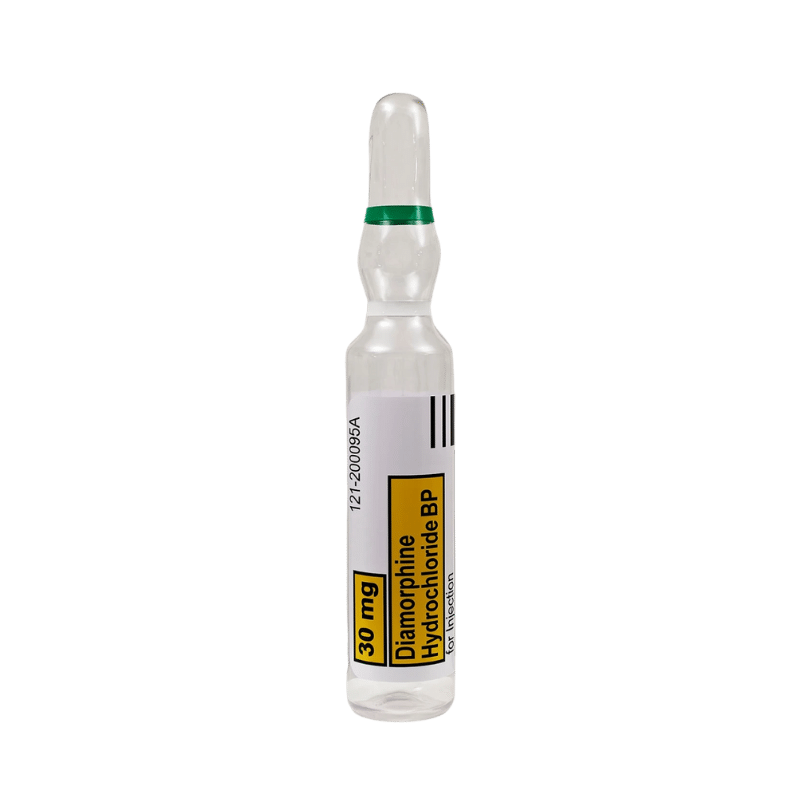
What Are the Side Effects of Heroin?
Here are the most common side effects of diamorphine:
- Constipation
- Decreased mental function
- Drowsiness
- Respiratory depression (this is the number one cause of overdose deaths)
Side effects as a result of injection are:
- Abscesses
- Blood-borne infections
- Infected heart valves
- Pneumonia
Additionally, diamorphine is a drug with high addiction potential; cessation comes with severe withdrawal symptoms.
However, because of misuse, street heroin is much more likely to result in adverse effects than the use of medical-grade diamorphine.
What Is Kratom?
Kratom is an all-natural herbal compound derived from the leaves of the Mitragyna speciosa evergreen tree in Southeast Asia.
This powerful psychoactive plant contains many alkaloids that account for its benefits, ranging from stimulant-like to calming and analgesic. The two most common alkaloids are mitragynine and 7-hydroxymitragynine [3].
Indigenous peoples in Southeast Asia have used this plant for centuries as traditional medicine. Only in the past couple of years has it become popular in the western world.
What’s the Dose of Kratom?
Since kratom’s effects depend highly on the dosage, it’s essential to get this right.
Dosages are always dependent on many factors like the method of consumption, body mass, age, etc.
With that caveat, here are the general dosage recommendations for kratom and their effects:
- Low dose (1-5 g) — Promotes stimulant and nootropic benefits
- Medium dose (5-10 g) — Evident analgesic and anxiolytic properties
- High dose (10-15 g) — Heavy tranquilizing, analgesic, and anxiolytic qualities; not recommended for inexperienced users
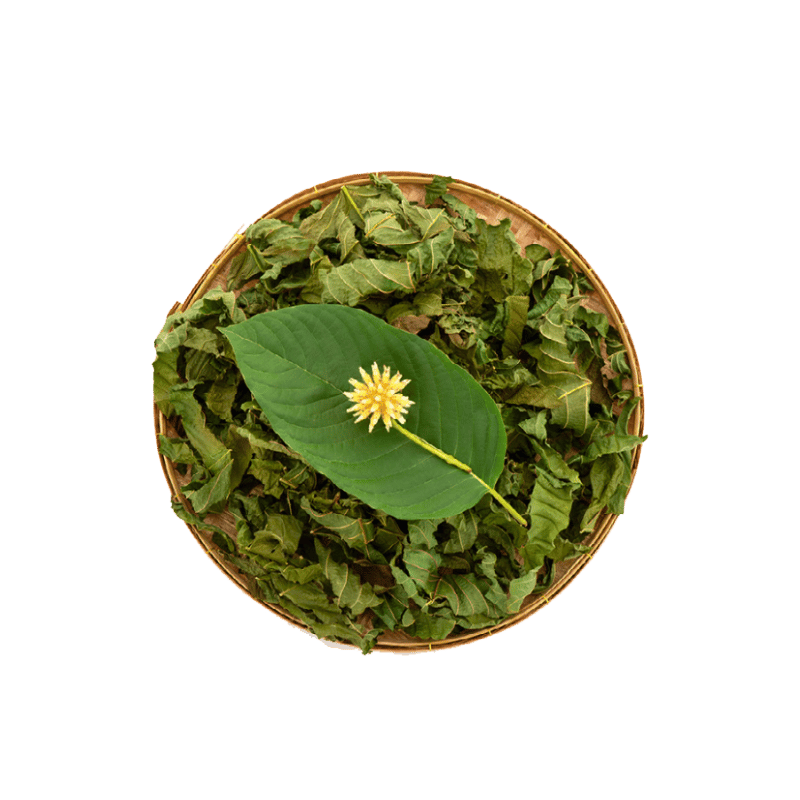
What Are the Side Effects of Kratom?
Kratom’s side effects are usually minimal if you use it carefully. The most common side effect is nausea if you take too much.
The side effects of kratom may include:
- Anxiety
- Brain fog
- Constipation
- Dizziness
- Headaches
- Heart palpitations
- Liver damage (with long-term use)
- Lethargy
- Nausea and vomiting
Kratom is also known to cause symptoms of physical and mental dependence. However, if you consume kratom responsibly, the chances of anything more than mild side effects are slim.
Related: Is Kratom Bad For Your Heart?
What Are the Different Types of Kratom?
Kratom comes in various strains, each with a distinct alkaloid profile.
The kratom plant grows in many different areas of Southeast Asia, like Thailand, Borneo, and Bali. These locations have different soil compositions and distinct harvesting and processing methods.
These differences give rise to the wide variety of kratom strains that are now known to us.
Be sure to research which kratom strains work best for your purposes, and don’t be afraid to experiment a bit.

White Vein Kratom
White vein kratom is known as the mind-based kratom strain. It offers the most powerful stimulant and nootropic benefits out of all of them.
If you’re looking to try kratom strictly for its mood-enhancing benefits or its ability to provide more streamlined mental focus and energy — this is the strain for you.

Red Vein Kratom
Red-veined kratom strains are most popular with those suffering from chronic pain or anxiety-related issues.
If you have recently gotten injured and are afraid of the possibility of becoming hooked on pharmacological medications like Vicodin, a herbal option like kratom is your best bet.
Aside from the analgesic benefits, this strain can also promote feelings of calm and relaxation.

Green Vein Kratom
Green vein kratom is the middle point between white and red kratom.
The all-around alkaloid profiles of these strains contain a healthy balance of the benefits in both. This makes green-veined strains the all-purpose or generalized strains.
Green-veined kratom is a great choice for beginners as it offers a great sampling of all the benefits of the kratom plant.

Yellow Vein Kratom
Yellow vein kratom likely comes from a mix of white and red strains, though this isn’t certain.
Yellow vein kratom users often report these strains to be pretty similar to the green-veined strains, which means they also have a generalized alkaloid profile.
However, yellow-veined kratom is usually milder than the other strains — perfect for beginners or those whose bodies strongly react to kratom.

Key Takeaways: Is It Safe to Mix Kratom & Diamorphine?
No. Combining kratom and diamorphine is not considered safe unless under the guidance of a physician.
Chemically, kratom and diamorphine work on the body in analogous ways. This agonistic relationship leads to a higher incidence of adverse effects, including overdose. Extreme caution is advised.
- Corkery, J. M., Streete, P., Claridge, H., Goodair, C., Papanti, D., Orsolini, L., … & Hendricks, A. (2019). Characteristics of deaths associated with kratom use. Journal of psychopharmacology, 33(9), 1102-1123.
- Uchtenhagen, A. A. (2011). Heroin maintenance treatment: from idea to research to practice. Drug and alcohol review, 30(2), 130-137.
- Jansen, K. L., & Prast, C. J. (1988). Ethnopharmacology of kratom and the Mitragyna alkaloids. Journal of ethnopharmacology, 23(1), 115-119.

